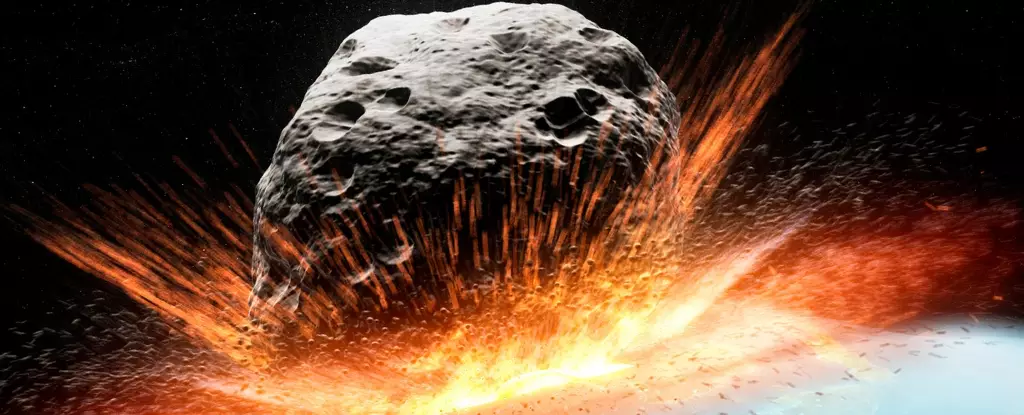In late December 2024, a significant cosmic discovery was unveiled when astronomers identified an asteroid designated as 2024 YR4. This designation stems from its discovery within the latter half of December, specifically being the 117th asteroid cataloged in that timeframe. The naming conventions in astronomy can often seem arbitrary, but they serve a vital purpose in tracking and cataloging celestial bodies as they journey through the vastness of space. Once identified, astronomers immediately commence monitoring procedures, assessing the asteroid’s trajectory and potential threats it may pose to Earth.
Initial calculations indicated a mere 1% chance that 2024 YR4 could collide with Earth, a figure that is often perceived as negligible. However, subsequent measurements have resulted in this probability more than doubling, with the latest estimates suggesting a 2.3% risk of impact on December 22, 2032. It is crucial to highlight that these figures derive from comprehensive simulations wherein astronomers run a multitude of orbital scenarios—specifically, 1,000 variations—of which 23 entries suggest an impact with Earth might occur. Despite the increase in risk, it’s important to contextualize this number: a 2.3% chance, while significant enough to warrant ongoing surveillance, is not imminently alarming.
The trajectory analysis indicates that even if the asteroid approaches Earth, it is expected to remain approximately 240,000 kilometers away, comfortably within the distance of the Moon’s orbit. Such proximity in astronomical terms does not always translate into immediate danger; indeed, astronomers are not particularly perturbed by the present calculations. NASA’s Planetary Defense Coordination Office, which employs the Torino scale to categorize asteroid risk, initially rated 2024 YR4 at a level 3 while its risk was under the 1% threshold, a classification that has persisted even as probability escalations have occurred. This highlights a systemic approach wherein risk is continually assessed rather than purely reacted to.
Astrological orbits are notoriously less stable compared to the predictable paths of planets. Asteroids are at the mercy of numerous gravitational influences—an aspect that introduces uncertainty into their orbital predictions. For 2024 YR4, an especially significant factor looms in the upcoming close approach to Earth in 2028, allowing astronomers an opportunity to refine their measurements substantially. This observational window is crucial since it may lead to better predictions concerning the asteroid’s future behavior and true impact risk.
The Path Ahead: Mitigating Risks
Even in a hypothetical scenario where the predictions evolve to indicate a nearly certain impact, the proactive measures in planetary defense are incredibly comforting. The real concern in terms of asteroid impact lies not in the detectable threats, such as 2024 YR4, but in those that evade detection due to their approach trajectory—such as the meteor that caused the Chelyabinsk event in 2013. This historical reference underscores the importance of vigilance in monitoring near-Earth objects.
Preparations for potential deflection efforts are also an essential part of the planetary defense strategy. Should the threat become sufficiently palpable, concerted international efforts could be launched to steer the asteroid off its collision course, allowing for the preservation of both lives and infrastructure.
Final Thoughts on Cosmic Monitoring
While the increasing odds of 2024 YR4 colliding with Earth might sound concerning, it’s vital to approach the situation with both caution and rationality. Over the years, many asteroid threats have come and gone, often with reduced risk through improved data from ongoing observations. The likelihood that 2024 YR4’s path will eventually stabilize toward a non-threatening trajectory is relatively high, reflecting an optimistic outlook. Continuous monitoring, advancements in technology, and international collaboration will be vital as we keep our gaze toward the stars through NASA’s dedicated efforts. Understanding, rather than fearing, the cosmos around us will always be the best practice as we navigate this vast universe.


Leave a Reply